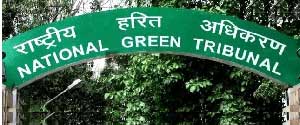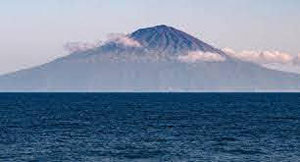November 2020 Environment
Sakshi Education
- NGT directs States, UTs to set up nodal agencies to protect, restore water bodies
 Following a plea seeking identification, protection and restoration of water bodies in Gurugram, the National Green Tribunal (NGT) has expanded the scope of the petition and directed all States and Union Territories to designate a nodal agency under respective chief secretaries within a month.
Following a plea seeking identification, protection and restoration of water bodies in Gurugram, the National Green Tribunal (NGT) has expanded the scope of the petition and directed all States and Union Territories to designate a nodal agency under respective chief secretaries within a month.
A Bench headed by NGT Chairperson Justice Adarsh Kumar Goel directed the nodal agencies to convene a meeting by January 31 to “take stock of the situation” and plan further steps, including directions to district authorities for further course of action. It also directed the nodal agencies to evolve a monitoring and grievance redressal mechanism.
Stating that there was a need for “continuous planning and monitoring” at the national, State and district levels, the panel observed that observations of the CPCB and an oversight committee needed to be acted upon.
“As suggested by the CPCB, a single agency needs to be set up in every State and Union Territory within one month.
This work may either be assigned to the Wetland Authority of the state or the River Rejuvenation Committee or to any other designated authority such as the Secretary, Irrigation and Public Health or Water Resources,” the Bench said.
- Calm winds push Delhi’s AQI to ‘severe’ category
An AQI between 0 and 50 is considered “good”, 51 and 100 “satisfactory”, 101 and 200 “moderate”, 201 and 300 “poor”, 301 and 400 “very poor”, and 401 and 500 “severe”.
The System of Air Quality and Weather Forecasting And Research (SAFAR) is a central initiative launched by the Ministry of Earth Sciences (MoES) in order to measure the air quality of cities.
SAFAR measures the pollution level as well as location-specific air quality of an area to provide a clearer view at the grass root level.
The Indian Institute of Tropical Meteorology (IITM), Pune developed this Air Quality Forecasting system.
It is operationalized by the India Meteorological Department (IMD).
- Tristan da Cunha island creates, massive marine protection zone
 The isolated UK overseas territory of Tristan da Cunha was declared the largest fully protected Marine reserve of Atlantic Ocean. This will prohibit sand extraction, bottom trawling fishing and deep-sea mining in more than 90% of waters of the territory. It includes 687,000 square kilo meters of water in the Atlantic Ocean.
The isolated UK overseas territory of Tristan da Cunha was declared the largest fully protected Marine reserve of Atlantic Ocean. This will prohibit sand extraction, bottom trawling fishing and deep-sea mining in more than 90% of waters of the territory. It includes 687,000 square kilo meters of water in the Atlantic Ocean.
UK is on the track of bringing 30% of world’s ocean under protected zone by 2030. The marine waters of Tristan da Cunha have been declared a protected zone in order to achieve this goal.
Tristan da Cunhais a small chain of islands inhabited by less than 300 humans. It is located at 6,000 miles from London in the South Atlantic Ocean. The waters around the island are the richest in the world. It is home to tens of millions of seabirds, unique land birds. There are two endangered species and five endangered species in the island. The island is also home to World Heritage sites such as Gough and Inaccessible Islands. These islands are the most important seabird islands of the world. The island will become largest no-take zone in the Atlantic Ocean after joining Blue Belt programme of UK.
- Forest rights claims of nearly 1,200 tribals in Hunsur rejected
Review petitions of approximately 1200 tribals for recognition of their claims over forest land under the Scheduled Tribes and Other Forest Dwellers (Recognition of Forest Rights) Act, 2006 was rejected by the local authorities in Mysuru (Karnataka).
A large number of people, especially the scheduled tribes have lived in and around forests for a long period in symbiotic relationships.
During the colonial time, the focus shifted from the forests being used as a resource base for sustenance of local communities to a State resource for commercial interests and development of land for agriculture.
Several Acts and policies such as the three Indian Forest Acts of 1865, 1894 and 1927 of the Central Govt. and some state forest Acts curtailed centuries-old, customary-use rights of local communities.
This continued even after independence till much later until enactment of The Scheduled Tribes and Other Traditional Forest Dwellers (Recognition of Forest Rights) Act, 2006.
The Supreme Court in 2019 ordered the eviction of nearly a million people across India whose claims under the Forest Rights Act, 2006 had been rejected.
- Vulture Action Plan 2020-25
The Ministry of Environment, Forests and Climate Change (MoEFCC) launched a Vulture Action Plan 2020-25 for the conservation of vultures in the country.
Vulture numbers saw a decline as much as 90% in some species in India since the 1990s in one of the most drastic declines in bird populations in the world.
Between the 1990s and 2007, numbers of three presently critically-endangered species, the Oriental white-backed, long-billed and slender-billed vultures decreased massively with 99% of the species having been wiped out.
The number of red-headed vultures, also critically-endangered now, declined by 91% while the Egyptian vultures by 80%.
The cause of the decline was established as diclofenac, a veterinary nonsteroidal anti-inflammatory drug (NSAID) in 2004, which is used to treat pain and inflammatory diseases such as gout in carcasses that vultures would feed off.
Just 0.4-0.7% of animal carcasses contaminated with diclofenac was sufficient to decimate 99% of vulture populations.
The MoEFCC released the Action Plan for Vulture Conservation 2006 with the Drugs Controller General of India (DCGI) banning the veterinary use of diclofenac in the same year.
Objectives of the Action Plan for Vulture Conservation 2020-2025.
To ensure minimum use of Diclofenac.
To prevent the poisoning of the principal food of vultures, the cattle carcasses, with veterinary NSAIDs, by ensuring that sale of veterinary NSAIDs is regulated and is disbursed only on prescription and by ensuring that treatment of livestock is done only by qualified veterinarians.
To establish Additional Conservation Breeding Centres along with Vulture Conservation Centres with samples and information collected from the wild analysed and stored at these centres.
To implement the Vulture Safe Zone programme at eight different places in the country where there are existing populations of vultures.
To launch conservation plans for the Red-headed and Egyptian vultures, with breeding programmes for both.
To declare a Vulture Safe Zone only when no toxic drugs are found in undercover pharmacy and cattle carcass surveys, for two consecutive years, and the vulture populations are stable and not declining.
To build four rescue centres for different geographical areas like Pinjore in the north, Bhopal in ventral India, Guwahati in Northeast and Hyderabad in South India.
- Goa to get India’s first green energy convergence project
The Energy Efficiency Services Limited signed a Memorandum of Understanding with the Department of New and Renewable Energy, Goa.
According to the agreement, the first convergence project of India to generate Green Energy for agriculture and rural areas is to be set up in Goa.
The project is to focus on energy solutions that are evolved based on the concepts that combine climate change, renewable energy and Artificial Intelligence.
The main objective of the project is to connect sectors such as LED lights, solar energy and energy storage in order to provide solutions that will enable decarbonisation.
Goa had set a target of generating 150 MW of green energy in next three years. Also, it has plans to set up 100 MW of solar power plants. The project will help Goa achieve its targets.
- All about Anakkayam hydel project
Various green collectives and environmental organisations have come together to protest against the Anakkayam Small Hydro Electric Project in Kerala.
The site of the project is not far from the Athirapally Hydel Electric Project.
It will come up in the buffer zone of the Parambikulam Tiger Reserve (PTR) and will also create a 5.617-km-long tunnel within the forest.
Around 20 hectares of forest land will have to be cleared out and around 1900 large trees and a larger number of small trees will be cut.
The area is ecologically fragile, as seen in the massive landslide followed by minor landslides at the project site in 2018, and the consequences will extend to loss of precious flora and fauna species.
It was granted approval without obtaining permission from the local Kadar tribe which holds the right of Community Forest Resources (CFR) as per the Forest Rights Act, 2006.
The site of the hydel project comes within the 400 sqkms of forest land that were given as CFR to the Kadar tribe which has the responsibility to protect and conserve the habitat.
- World’s last known white giraffe gets GPS tracking device
In order to keep poachers at bay, the world’s only known White Giraffe was fitted with GPS tracking device in north east Kenya.
The Giraffe is white in colour due to a rare genetic condition called Leucism. Leucism is loss of pigmentation. The tracking device will provide hourly update about the whereabouts of the Giraffe.
This will help to keep the animal safe from poachers. The White Giraffe was first spotted in 2016. The mother and calf had died.
According to the Africa Wildlife Foundation, around 40% of Giraffe population has disappeared in the last thirty years.
The IUCN (International Union for Conservation of Nature) has listed Giraffe under ‘Vulnerable’ category.
According to IUCN, currently, there are 68,293 Giraffe in the world. Giraffe are already extinct in seven African countries. They are Eritrea, Burkina Faso, Guinea, Mauritania, Mali, Senegal and Nigeria.
India has around 30 Giraffes in eleven zoos. Apart from Zoos, there are no Giraffes in the forests of India.
There are three different species of Giraffe in Kenya. They are Masai Giraffe, Rothschilds Giraffe and Reticulated Giraffe. Kenya is the only country in the world that is actively taking initiatives to conserve Giraffe in its forests.
The World Giraffe Day is celebrated on June 21. It was initiated by the Giraffe Conservation Foundation.
- PM Modi inaugurates Sardar Patel Zoological Park in Gujarat
 Sardar Patel Zoological Park, popularly known as Jungle Safari, in Kevadia, Narmada district in Gujarat was inaugurated by PM.
Sardar Patel Zoological Park, popularly known as Jungle Safari, in Kevadia, Narmada district in Gujarat was inaugurated by PM.
PM also inaugurated the ‘Arogya Van’ in Kevadia, which has hundreds of medicinal plants and herbs and also provides information about their usage and importance.
The forest is spread over an area of about 17 acres and has five lakh plants of 380 selected species.
It also comprises a lotus pond, alba garden, aroma garden, yoga and meditation garden, indoor plant section, digital information centre, souvenir shop and a cafeteria serving Ayurveda foods, among other things.
PM also inaugurated ‘Ekta Mall’ and ‘Children Nutrition Park’ and took a ride in ‘nutri train’ at the park.
- Arvind Kejriwal launches ‘Green Delhi’ app to redress pollution complaints
Delhi government launched the ‘Green Delhi’ mobile application, using which citizens can bring pollution causing activities to the Government’s notice.
The application is a part of the Delhi government’s mega anti-air pollution campaign “Yudh Pradushanke Virudh” (War Against Pollution) launched on October 5.
The main objective of the application is to keep a track of increasing air pollution in the National Capital. It will also help in bringing the pollution causing activities to the notice of the state government.
Citizens can click pictures or make a video of pollution causing activities, such as burning of garbage, industrial pollution, dust etc. and upload them on the application.
The application will identify the location and the complaint will be automatically forwarded to the concerned department for time-bound redressal.
A ‘green war room’ has been set up at the Delhi Secretariat to monitor the status of complaints. A team of 70 ‘green’ marshals will assist in their redressal.
Government also introduced the Tree Transplantation Policy. Under the policy 80 percentage of the trees affected by Infrastructure Projects are to be transplanted.
The Electric Vehicle Policy of the Delhi Government aims to subsidize the purchase of electric vehicles in the national capital region. The policy aims to bring 5 lakh electric vehicles on road in next 5 years.
- High levels of ammonia in Yamuna water
River Yamuna experienced high levels of ammonia concentration. The levels of ammonia went more than 6 times of the accepted levels. Ammonia levels had reached 3 parts per million (ppm) in raw Yamuna water. The acceptable level of ammonia is 0.5 ppm.
Yamuna is the largest tributary of Ganga river that originates near Yamunotri glacier in western Uttarakhand.
Near Dehradun, the Yamuna is joined by its biggest tributary, the Tons River. The Chambal River is Yamuna’s biggest tributary on the right. Other important tributaries of the Yamuna include the Hindon, Sarda and Giri rivers on the right and Betwa and Sindh on the left. Near Allahabad, after a course of about 1,376 km, the Yamuna joins the Ganga River.
The Yamuna has become one of the most polluted in India, because so much of its course is through extremely densely populated areas where vast quantities of sewage have been discharged directly into it.
Ammonia is a colourless, pungent gaseous compound of hydrogen and nitrogen that is highly soluble in water. Presence of a high level of ammonia is difficult for aquatic organisms to sufficiently excrete the toxicant, which may lead to toxic build-up in internal tissues and blood, and potential to death.
Natural sources of ammonia are decomposition/breakdown of organic waste matter, forest fires, animal and human waste, and nitrogen fixation processes.
Huge gas exchange with the atmosphere, the amount of ammonia is added when industrial effluents are discharged into waters. Surface run water from the farm-lands carry a lot of ammonia coming from fertilisers.
- Sri Lanka rescues 120 stranded whales
Sri Lanka's navy with the coast guard, local volunteer’s conservation experts have rescued nearly 120 stranded whales and pulled them back to the deep sea in an overnight operation.
Whales are said to be strand themselves on beaches across the globe and they do so singularly or in groups.
Whale beaching, also called Cetacean Stranding is the phenomenon in which cetaceans strand themselves on land (generally beaches).
While individual stranding are mostly lead to injury or sickness, it is not clear why exactly whales beach themselves in groups.
Some whales follow schooling fish or prey into shallow waters, that causes the whales to be disoriented, as a result of that they get stranded.
Some whales panic from being trapped by a predator such as killer whales or sharks.
Whales could be drawn to land by prey-rich currents.
The shape of the coastline and the beach could also have a role to play.
For instance, if the beach has gently-sloping shorelines, whales that are dependent on echolocation for navigation can be deceived.
Project Lion
Six new sites apart from the Kuno-Palpur Wildlife Sanctuary have been identified under Project Lion that was announced by Prime Minister Narendra Modi August 15, 2020, on the lines of Project Tiger and Project Elephant.
The programme has been launched for the conservation of the Asiatic Lion, whose last remaining wild population is in Gujarat’s Asiatic Lion Landscape (ALL).
The Wildlife Institute of India, along with the Gujarat Forest Department, had created a Project Lion proposal and sent it to the Union Ministry of Environment, Forest and Climate Change on September 15. Down to Earth (DTE) has accessed the proposal.
The six new sites identified for possible lion relocation in the future include:
Madhav National Park, Madhya Pradesh
Sitamata Wildlife Sanctuary, Rajasthan
Mukundra Hills Tiger Reserve, Rajasthan
Gandhi Sagar Wildlife Sanctuary, Madhya Pradesh
Kumbhalgarh Wildlife Sanctuary, Rajasthan
Jessore-BalaramAmbaji WLS and adjoining landscape, Gujarat
Lion relocation has been talked about since 1995, when the Kuno Wildife Sanctuary was identified as an alternate site. The motive behind finding a relocation site for the species is because the population in Gir has low genetic diversity, making it vulnerable to threats of extension from epidemics.
The proposal sought to create free-ranging lion populations within Gujarat and in other states to counter this problem.
Currently, the only free-ranging population of about 674 Asiatic lions exists in the ALL that is spread over approximately 30,000 square kilometres.
ALL includes Gir National Park and Sanctuary and covers eight districts of Gujarat, including Junagadh, Amreli, Bhavnagar, Porbandar, Rajkot, Gir-Somnath, Botad and Jamnagar, according to the 14th Lion Population Estimation Report 2015.
Published date : 20 Nov 2020 01:26PM


















